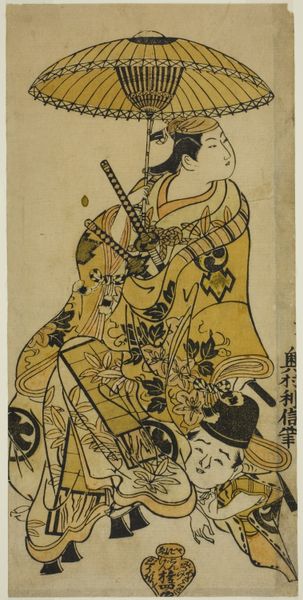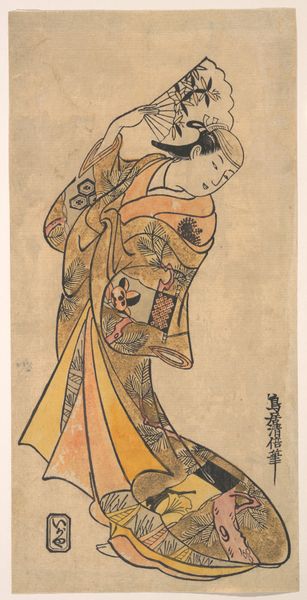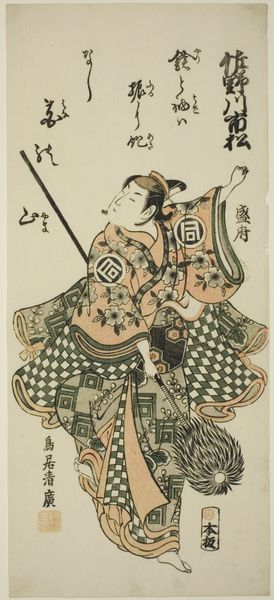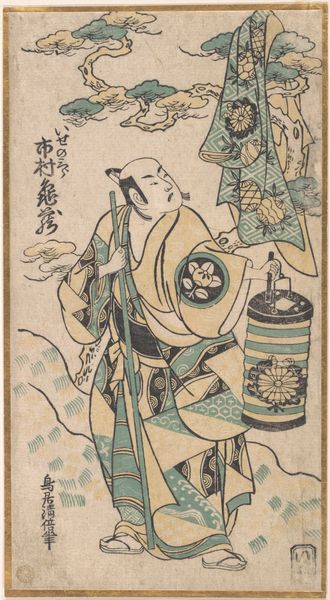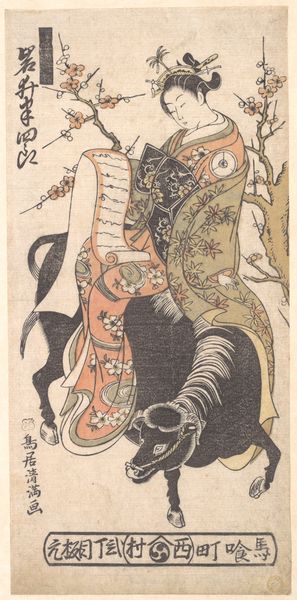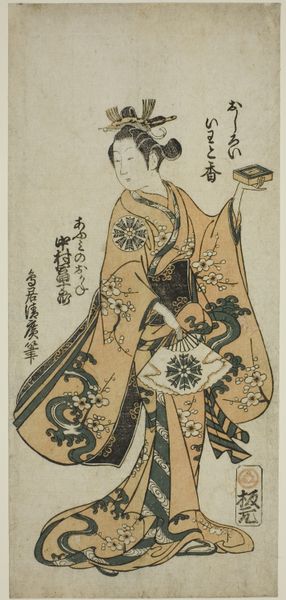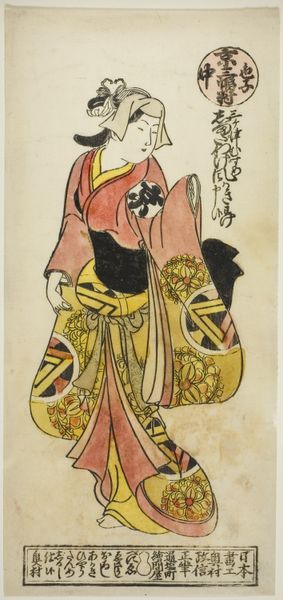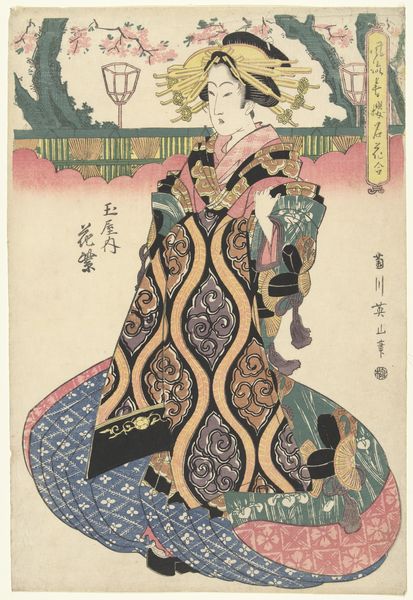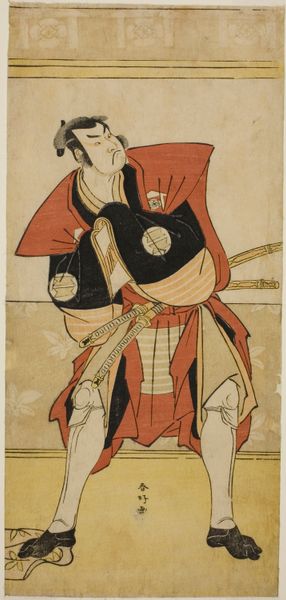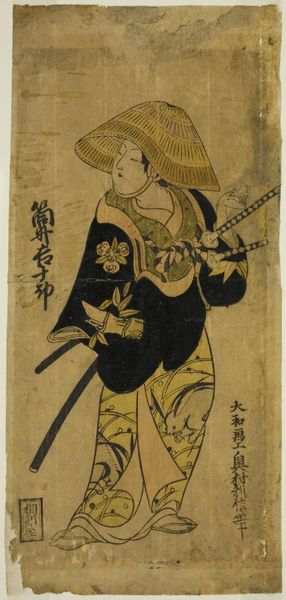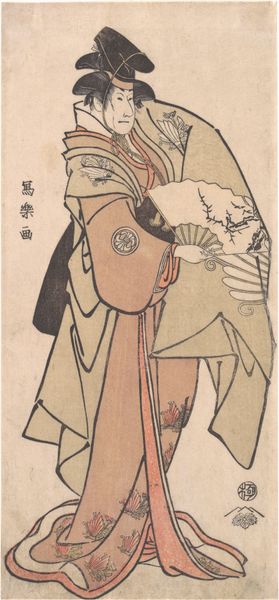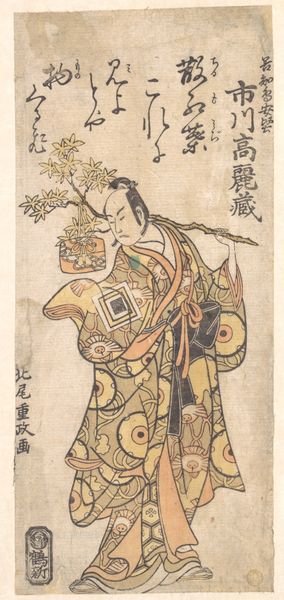
The Actor Ichikawa Danjuro II as Soga no Juro in the play "Hanabusa Bunshin Soga," performed at the Ichimura Theater in the first month, 1733 (?) c. 1733
0:00
0:00
print, woodblock-print
#
portrait
# print
#
asian-art
#
ukiyo-e
#
figuration
#
woodblock-print
#
genre-painting
Dimensions: 33.0 × 16.2 cm
Copyright: Public Domain
Torii Kiyonobu II created this woodblock print around 1733, capturing Ichikawa Danjuro II in the role of Soga no Juro. During the Edo period, Kabuki theater was a vibrant reflection of Japanese society. Actors were not merely performers; they were cultural icons, fashion trendsetters, and subjects of great public fascination. This print highlights the performative aspect of identity. Kabuki roles often required actors to embody various gendered, classed, and moral identities, and Danjuro's portrayal of Soga no Juro is no exception. It invites us to consider how gender and heroism were constructed and represented on the Kabuki stage. It wasn't just about acting, it was about embodying ideals and archetypes that resonated with audiences. The exaggerated features and dynamic pose are typical of the Torii school of printmaking, known for its bold designs and association with Kabuki theater. Consider how such artworks contributed to the evolving identities of performers and audiences alike.
Comments
No comments
Be the first to comment and join the conversation on the ultimate creative platform.
